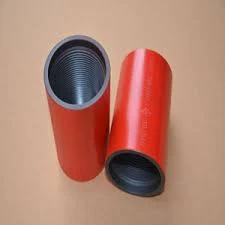- Afrikaans
- Albanian
- Amharic
- Arabic
- Armenian
- Azerbaijani
- Basque
- Belarusian
- Bengali
- Bosnian
- Bulgarian
- Catalan
- Cebuano
- Corsican
- Croatian
- Czech
- Danish
- Dutch
- English
- Esperanto
- Estonian
- Finnish
- French
- Frisian
- Galician
- Georgian
- German
- Greek
- Gujarati
- Haitian Creole
- hausa
- hawaiian
- Hebrew
- Hindi
- Miao
- Hungarian
- Icelandic
- igbo
- Indonesian
- irish
- Italian
- Japanese
- Javanese
- Kannada
- kazakh
- Khmer
- Rwandese
- Korean
- Kurdish
- Kyrgyz
- Lao
- Latin
- Latvian
- Lithuanian
- Luxembourgish
- Macedonian
- Malgashi
- Malay
- Malayalam
- Maltese
- Maori
- Marathi
- Mongolian
- Myanmar
- Nepali
- Norwegian
- Norwegian
- Occitan
- Pashto
- Persian
- Polish
- Portuguese
- Punjabi
- Romanian
- Russian
- Samoan
- Scottish Gaelic
- Serbian
- Sesotho
- Shona
- Sindhi
- Sinhala
- Slovak
- Slovenian
- Somali
- Spanish
- Sundanese
- Swahili
- Swedish
- Tagalog
- Tajik
- Tamil
- Tatar
- Telugu
- Thai
- Turkish
- Turkmen
- Ukrainian
- Urdu
- Uighur
- Uzbek
- Vietnamese
- Welsh
- Bantu
- Yiddish
- Yoruba
- Zulu
petroleum tubing coupling
Understanding Petroleum Tubing Coupling Key Components in Oil and Gas Production
In the oil and gas industry, efficient and effective transportation of hydrocarbons from subsurface reservoirs to surface facilities is crucial. One of the vital components of this production system is the petroleum tubing coupling. This article will explore the function, types, materials, and importance of tubing couplings in the oil extraction process.
What is Petroleum Tubing Coupling?
Petroleum tubing coupling is a specialized fitting that connects sections of tubing in a wellbore. Tubing is a pipe through which oil and gas travel from the reservoir to the surface, and couplings serve to secure these sections together. They are designed to withstand extreme conditions, including high pressure, temperature variations, and corrosive environments. Their primary purpose is to maintain the integrity of the tubular system, ensuring safe and efficient delivery of hydrocarbons.
Function of Couplings
The primary function of a tubing coupling is to create a secure connection between adjacent sections of tubing. This connection must be robust enough to handle the stresses encountered during extraction processes, such as changes in pressure, thermal expansion, and mechanical vibrations. A well-engineered coupling provides a leak-tight seal, which is critical for preventing fluid loss and ensuring safety in operations. Additionally, couplings can facilitate the disassembly of tubing for maintenance or replacement when needed.
Types of Tubing Couplings
There are several types of tubing couplings designed for specific applications
. The most common types include1. Threaded Couplings These are the most widely used type. They feature male and female threads that allow for a quick and secure connection between tubing sections. Threaded couplings can be further categorized based on their thread types, such as API (American Petroleum Institute) threads, which are standard in the oil industry.
2. Welded Couplings These couplings are welded onto tubing sections, providing a permanent connection. They are suitable for high-pressure applications where a leak-tight seal is paramount.
petroleum tubing coupling

3. Flanged Couplings Used where easy disassembly is required, flanged couplings feature pads with holes for bolts, enabling quick connections and disconnections.
4. Swaged Couplings These are deformed during installation to create a strong, tight fit. They are typically used in applications requiring high strength and reliability.
Materials Used
The materials used for manufacturing tubing couplings play a crucial role in their performance. High-strength carbon steel is most commonly used due to its durability and cost-effectiveness. However, in environments where corrosion is a concern, stainless steel or corrosion-resistant alloys might be selected to enhance longevity. Special coatings or treatments may also be employed to further protect them from harsh conditions.
Importance in Oil and Gas Production
The significance of petroleum tubing couplings cannot be overstated. A malfunction or failure in the coupling can lead to catastrophic consequences, including leaks, blowouts, and loss of product. This not only poses safety risks to personnel and the environment but can also result in substantial financial losses for operating companies.
Moreover, the quality of couplings directly affects the efficiency of hydrocarbon extraction. High-quality couplings contribute to minimal pressure loss and reduced downtime for repairs, ensuring that production targets are met. In an industry where operational efficiency is crucial, investing in high-quality tubing couplings can ultimately lead to increased profitability.
Conclusion
In summary, petroleum tubing couplings are essential components of oil and gas production systems. They provide secure connections that can endure the rigors of extraction processes. With various types available, each suited for specific conditions and applications, selecting the appropriate coupling is critical for ensuring operational efficiency and safety. As the global demand for hydrocarbons continues to grow, the importance of these fittings in maintaining reliable production cannot be overlooked. Through ongoing advancements in materials and engineering, the future of petroleum tubing couplings remains bright as the industry continues to adapt to new challenges.
-
Tubing Pup Joints: Essential Components for Oil and Gas OperationsNewsJul.10,2025
-
Pup Joints: Essential Components for Reliable Drilling OperationsNewsJul.10,2025
-
Pipe Couplings: Connecting Your World EfficientlyNewsJul.10,2025
-
Mastering Oilfield Operations with Quality Tubing and CasingNewsJul.10,2025
-
High-Quality Casing Couplings for Every NeedNewsJul.10,2025
-
Boost Your Drilling Efficiency with Premium Crossover Tools & Seating NipplesNewsJul.10,2025







